How to care for tomatoes in a greenhouse: rules for growing greenhouse tomatoes
Tomatoes are one of the most popular crops and are widely grown in greenhouses. The fact is that in greenhouse conditions you can get a much better and more abundant crop than when grown in open ground. However, not all novice gardeners know how to properly care for tomatoes in a greenhouse.
Next, we will talk in detail about all the main aspects of agricultural technology for growing tomatoes in a greenhouse, from choosing the timing of planting seedlings, preparing the beds and before harvesting.
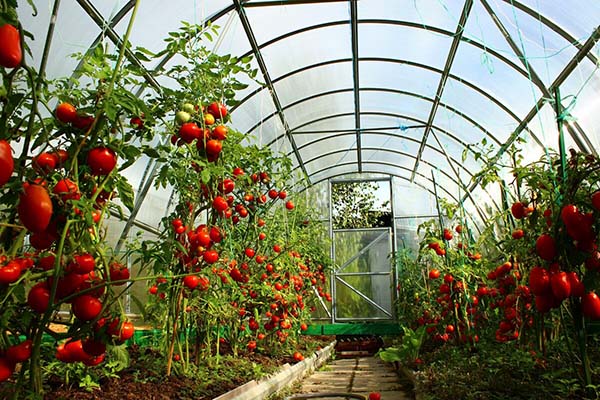
Content
When to plant tomato seedlings in a greenhouse
The timing of planting tomato seedlings in a greenhouse primarily depends on the climatic conditions of your region, as well as on the equipment of your greenhouse (of course, first of all, you can plant in a heated greenhouse, in a polycarbonate greenhouse - later, and last of all - in a film greenhouse).
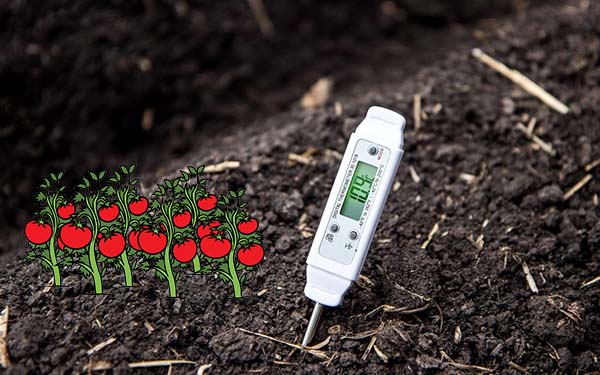
There are also certain requirements for the seedlings themselves, which must have the following characteristics:
- developed root system that occupies the entire volume of seedling capacity;
- stem thickness - at least 7 mm;
- height - 20-30 cm;
- the number of true leaves is from 6 to 10 pieces;
- age - 50-70 days.
Note! About, when to plant tomato seedlings in the greenhouse, at what temperature, read more in this article.
How to plant tomato seedlings in a greenhouse
Before planting tomato seedlings in the greenhouse, it should be prepared, or rather hardened. Also, if desired and necessary, cut the lower leaves and feed, and only then correctly plant them in a permanent place. Even earlier, you need to prepare the greenhouse itself and the beds.
By the way! About, how to plant tomato seedlings in a greenhouse, also detailed in this material.
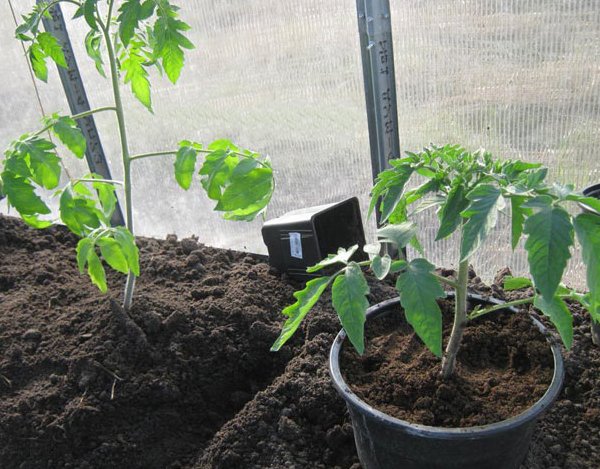
Growing tomatoes in a greenhouse: rules for caring for greenhouse tomatoes
Finally, let's talk about what conditions need to be created for tomatoes and how to properly care for them in a greenhouse in order to ultimately get a good harvest.
Advice! If it suddenly started cold snap (frost), then the greenhouse should be promptly put 5 liter water containers (water heats up quickly during the day and cools down for a long time at night) and shelter seedlings non-woven fabric or film.
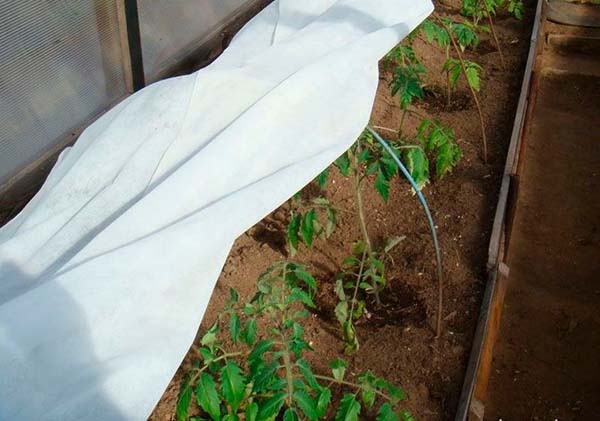
Video: 4 factors affecting the yield of tomatoes - the basic rules and conditions for the successful cultivation of tomatoes
Growing conditions: temperature, humidity, needairing
The optimum temperature for the successful cultivation of tomatoes is + 23-28 degrees during the day and not lower than + 15-20 degrees at night, and the ideal humidity is 50-60%. In such conditions, tomatoes will grow well and almost not hurt (this is especially true phytophthora).
Therefore, one of the most important factors in the successful cultivation of tomatoes (and any crop) in a greenhouse is regular ventilation, especially when the weather is hot.
It is equally important to keep the greenhouse closed when it is cool.
If you see that condensation has formed on the walls of the greenhouse, open the vents and doors rather.
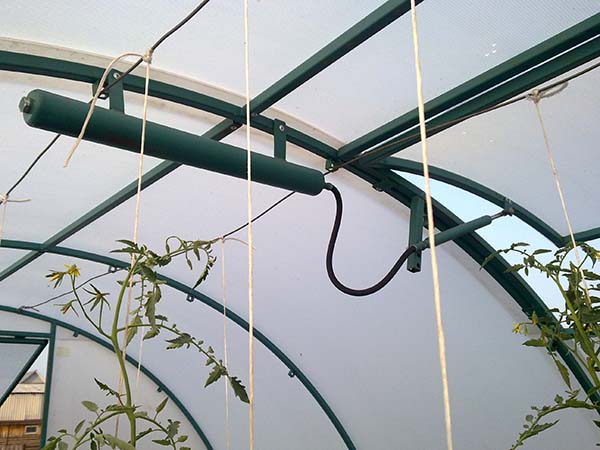
Watering
Proper watering is the key to getting a high-quality tomato crop.
Of course, drip irrigation is ideal, but as a rule, most gardeners water their plants with a watering can.
Basic rules for watering tomatoes in a greenhouse:
- For irrigation, use warm water (at least 18 degrees).
- You need to water strictly at the root, without getting on the leaves.

- Watering should be done in the first half of the day (in the morning - if it's hot, or before lunch - in cloudy weather).
In the evening, watering tomatoes is by no means worth it!
The fact is that in the absence of sunlight, the processes of photosynthesis do not occur in plants, which means that the normal development of bushes and fruits is simply disrupted (one of the reasons for cracking tomatoes).
But even worse, when you water in the evening, the humidity in your greenhouse rises, and at night the temperature inevitably drops. At the same time, high humidity and low temperatures are an excellent environment for the development of fungal diseases such as late blight and powdery mildew.
On the other hand there is an opposite opinion that after watering the plant begins to absorb moisture, opens, i.e. begins to live. And then the sun comes out with its scorching rays ... However, this is more important for the warm southern regions than for the Middle Belt or more northern places.
- As a rule, it is recommended to water tomatoes abundantly, but not often.
Although you can do it in smaller volumes, but more often. In this case, it is important to immediately determine the watering regime.
If you constantly change the watering mode (it is very dry, then humid), the tomatoes will simply crack.
- Watering frequency - 1 time in 5-7 days depending on weather conditions (hot - more often, cool - less often).
By the way! You can determine that a plant needs watering by its leaves: when they drop slightly, it's time to water.
- At the same time, if at the beginning of the growing season (from planting to flowering) it is enough to pour 2-3 liters under one bush, then with the beginning of flowering and pouring of fruits, increase to 5-10 liters. When the tomatoes begin to turn red, the watering rate should be halved, otherwise the tomatoes will ripen longer and become watery.
- Each watering should be accompanied by subsequent shallow (surface) loosening of the soil (if the bed is not mulched).
By the way! More details about the rules and frequency of watering tomatoes in the greenhouse told in this material.
Mulching
To keep moisture in the soil longer, you can mulch your tomato beds with the same mowed lawn grass, hay or straw. Moreover, this should be done only 2-3 weeks after you plant your tomatoes and they have already taken root.
By the way! Mulching is also an excellent prevention against powdery mildew.
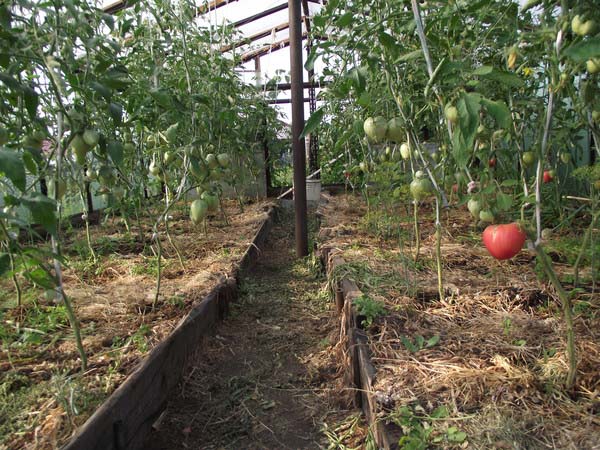
Top dressing
Tomatoes in the greenhouse, as well as in the open field, need to be fed as needed.
- If you have properly filled the soil with nutrients during the preparation of the garden (or put it in the hole), then most likely you will not need any additional dressings (except for potash, they must be done during the fruiting period).
- However, if the plant begins to signal that something is missing, then you have no choice: you need to fertilize.
Advice! The site has a separate material about how to properly feed tomatoes in a greenhouse.
Most often (if you originally planted seedlings in fertilized soil), tomatoes should be fed at the moment when their fruits begin to pour, i.e. after flowering.
Although, if necessary, 10-14 after planting the seedlings, you can feed the tomatoes with green fertilizer, bird droppings, mullein (all in liquid form), or even better - with a complete mineral fertilizer: nitroammophos.
And if during the flowering period there will be unfavorable weather (too hot or cold), then it is worth spraying with boron or a similar preparation to improve fruit set.
Like all plants, tomatoes require a full range of macro- and microelements. Moreover, for the full growth and development of tomatoes, it is especially important phosphorus (it should be added to the soil even before planting, or directly into the hole, for example, superphosphate).
Phosphate fertilizers contribute to the better development of the root system, acceleration of flowering and rapid ripening of fruits.
You can not bring fresh manure under the tomatoes, as well as, in principle, overfeed nitrogen fertilizers, otherwise, to the detriment of fruiting, the plant will form a vegetative mass, bush (there will be abundant growth of stepsons) and fatten.
In addition, tomatoes require and potash fertilizers (especially during pouring and ripening): the same solution or infusion wood ash, potassium sulfate (potassium sulfate).
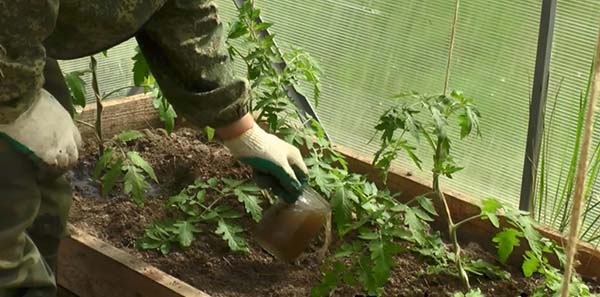
Of course, the easiest way is to feed with special fertilizers for tomatoes: the same Agricola for nightshades (for tomatoes, peppers and eggplants).
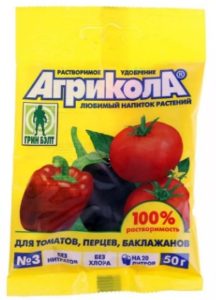
But it is much more economical and effective to use certain minerals (nitroammofosk, ammonium nitrate, urea, potassium sulfate, superphosphate, potassium monophosphate) and organic fertilizers (bird droppings, mullein, herbal infusion, wood ash).
Important! Before fertilizing with any mineral fertilizer, the soil must first be shed with plain water.
It is especially important not to forget to fertilize with fertilizers. with trace elements (with the same Humate +7, magnesium sulfate - during fruiting, calcium nitrate - 2-3 weeks before the reddening of the fruit against top rot).
By the way! The site has a detailed article about what and how to feed tomatoes in the greenhouse throughout the season.
Garter
The formation of tomatoes begins with their garter, which everyone needs indeterminate (tall)as well as determinant tomatoes (except perhaps dwarf or standard).
It is very important to tie the tomatoes on time so that they do not fall to the ground, which is why they do not become infected with any fungal disease.
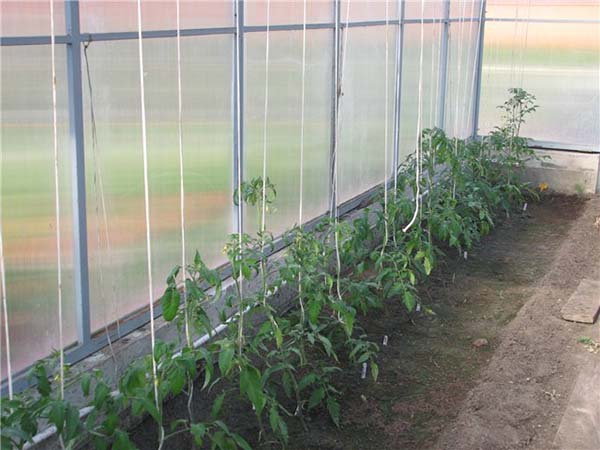
For garters of tomatoes, it is optimal to use wide enough cotton strips of fabric or some kind of twine. In this case, you do not need to tie up tightly so as not to transfer the stems. In the future, as you grow, you will only need to twist (wrap) the stems clockwise around the rope (twine).
By the way! The site already has an article that describes in detail about rules and methods of garter tomatoes in a greenhouse and open field.
Formation: rules for pinching and pinching
If you want to get an early and maximum harvest, then any tomatoes must be tied up and shaped, even determinant (undersized), especially indeterminate (tall), otherwise you will simply get an impenetrable jungle from many vines, on which there will be very few fruits.
Important! Formation includes pinching, as well as pinching growth points and removing excess leaves.
Stepsons are shoots growing from leaf axils.
Respectively, pinching - this is the removal of stepsons, and they do not need to be broken out completely (otherwise they will grow back) and always leave small petioles. It is better to do this in the morning so that the wound has time to close by the evening. As a rule, pinching is done 1 time in 5-7 days (i.e. every weekend).
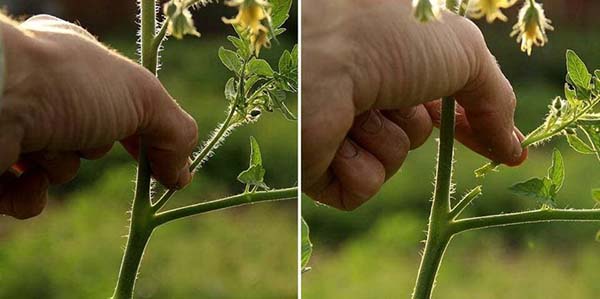
Also follows remove dry, diseased, excess and thickening leaves (upper and lower). In this case, the following rule should be used: the leaf that is located above the brush cannot be removed until a stable maturation of this brush begins. But if it gets in the way (shades) too much, then you can shorten it in half. The lower leaves can begin to be removed after the fruits are completely filled. However, this should be done gradually, tearing off 1-3 sheets per week.
Moreover, the formation determinant (undersized) and indeterminate (tall) tomatoes are different and have their own nuances.
Determinant tomatoes in the greenhouse most often form in 3 stems. However, their formation may differ for ordinary and superdeterminate (undersized and standard) varieties:
- schemes for the formation of conventional determinant tomatoes: in the greenhouse are formed in 3 stems, in this case, 2 lower stepsons are selected, which are then pinched after the leaf following the fruit brush. And sometimes in 2 stems - with the transfer of the growth point to the lateral shoot, i.e. first, the lower stepson is left, and then the stepson from this stepson (after the fruit brush), which is also pinched after the leaf:
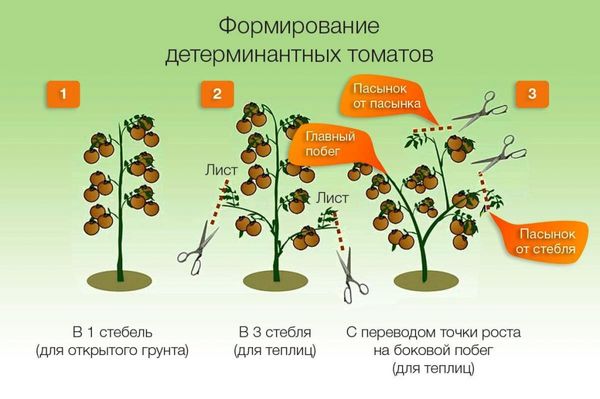
- schemes for the formation of superdeterminant (undersized) tomatoes, in general, repeat the previous ones, but such tomatoes are not formed with the transfer of the growing point to the lateral shoot:
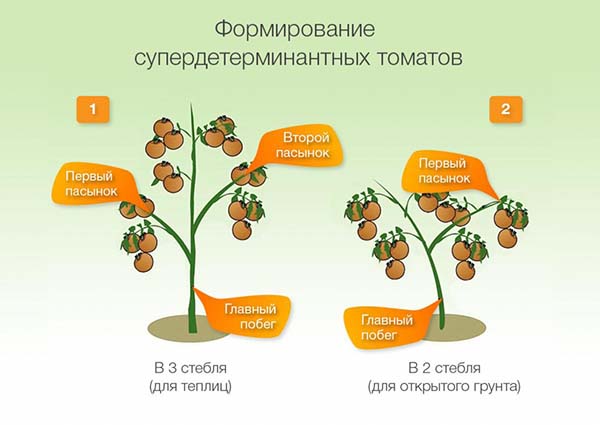
Concerning indeterminate tomatoes, then they, as a rule, are formed in the greenhouse in 1 stem... When the vine reaches the top of the greenhouse, or the second half of July-early August is already approaching (the very time of the beginning of active fruiting), then you will definitely need to cut off the top-top (growth point), otherwise the tomatoes that will be tied up there simply will not have time to ripen. In this case, on the bush, as a rule, they leave about 7 fruit clusters, while in the open field - 5.
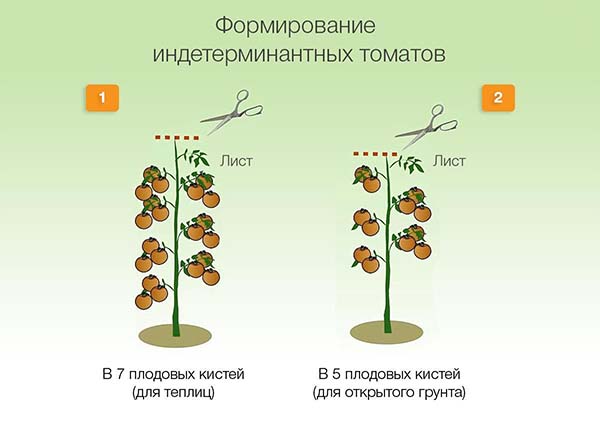
Very rarely, tomatoes in a greenhouse are formed into 2 stems.
Advice! In this case, it is recommended to leave stepsonlocated under the first flower brushand delete all others.
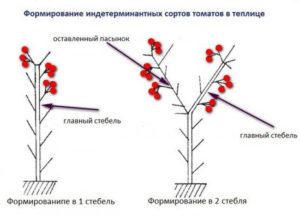
By the way! The site has detailed articles about how to shape in general and separately pinch tomatoes in the greenhouse.
Pollination
Tomato is a self-pollinating crop, but for better pollination in the greenhouse, you can help. Namely, you need to manually slightly shake the bushes during their flowering period, either put a fan in order to artificially create favorable conditions for pollination. It is better to do this in the morning, before lunchtime (at 9-12 o'clock in the afternoon), when it is already warm in the greenhouse, but not yet very hot.
If the tomatoes bloom well, but pollination does not occur, then there are reasons for this. For example, this may not happen due to the heat: at temperatures above + 30-33 degrees, the pollen becomes sterile. Either there is no wind in the greenhouse, the humidity is too high.
Harvesting
Important! You need to pick tomatoes in a timely manner: if you leave the lower, already ripe tomatoes, they simply will not allow the upper ones to ripen.
Depending on the degree of ripeness, tomatoes are used for different purposes:
- green - for long-term storage and ripening;
- dairy, brown and pink (blanche or blanche maturity) - for pickling, pickling and canning, as well as for ripening;
About the methods of ripening tomatoes at home detailed in this article.
- red - used directly for food or for making tomato juice or paste.

Preparing the greenhouse for winter
After you harvest the last crop of tomatoes in September-October, you will need to clean the greenhouse of plant residues, rinse thoroughly and process.
By the way! The site has a detailed article about how to process a greenhouse in the fall after harvest and prepare it for winter.
Diseases and pests of tomatoes
It is always better to prevent something than to fight directly. This also applies to tomatoes. Namely, their diseases and pests, in particular their prevention and protection.
Tomatoes grown in a greenhouse are susceptible to the following fungal diseases:
- late blight;
This is one of the most common and dangerous fungal diseases, so combating it is dedicated a whole separate article.

- various spots: brown spot (cladosporium), gray spot, etc.
- various rot (stem, root, vertex, gray, brown or fomoz, etc.);
- blackleg;
- powdery mildew and etc.
And also viral (mosaic, and infectious chlorosis that is carried whitefly) and bacterial (especially bacterial cancer) diseases.
By the way! If your tomatoes curled leaves, this does not mean that they are ill with something.
More details about the reasons why the leaves of tomatoes can curl, you can find in this article.
Alternatively, for the preventive treatment of tomatoes from diseases, you can use biological preparations such as Gamair, Alirin, Trichodermin (Trichoderma), as well as Fitosporin... And Glyocladin (1 tablet) can simply be deepened by 2-3 cm, stepping back 5 cm from the plant.
As for pests, the main enemies of tomatoes in the greenhouse are:
- nematode;

- aphid;
- spider mite;
By the way! The site has an article about how to deal with spider mites on cucumbers in a greenhouse, for tomatoes everything is, in principle, the same.
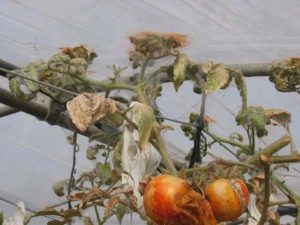
- gnawing scoops;
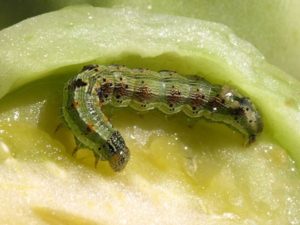
- bear;
Important! The site has a detailed article about how to deal with a bear in the garden.
- greenhouse whitefly (the most dangerous pest tomatoes in the greenhouse);
Note! Also, there is already detailed material about how to deal with whitefly on tomatoes in a greenhouse.
For preventive treatments of tomatoes from pests, biological insecticides such as Fitoverm andMetarizine.
Video: diseases and pests of tomatoes
Self-harvesting of tomato seeds
If you planted a variety (not a hybrid), and in the end it just amazed you, then you can collect and prepare seeds yourself, of course, if you have the desire and time.
By the way! About, how to properly harvest tomato seeds yourself, detailed in this material.
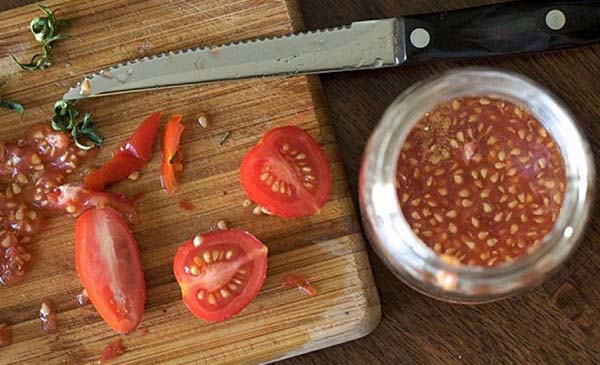
Thus, now you know all the basic rules for growing and caring for tomatoes in a greenhouse, which means that your chances of getting a high yield of greenhouse tomatoes have increased significantly. Well, it remains to put them into practice. Good luck!
Video: growing tomatoes in a greenhouse

